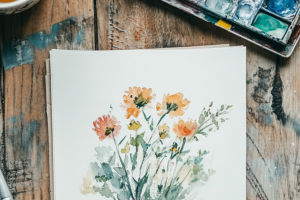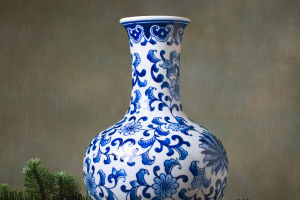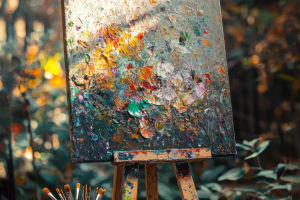
Watercolor painting is a beautiful and expressive art form that can be both relaxing and rewarding.
Understanding the basics of watercolor supplies can make your learning process smoother and help you produce better artwork.
Let’s take a look at the key tools you'll need to get started with watercolor painting!
1. Watercolor Paints
The first essential item in any watercolor artist's toolkit is, of course, the watercolor paints themselves. Watercolor paints come in two main types: pan paints and tube paints.
Pan Watercolors: These are solid blocks of watercolor that you activate by adding water. Pan watercolors are portable and ideal for traveling artists.
Tube Watercolors: Tube watercolors are more concentrated, and you squeeze the paint out onto a palette to mix with water. They are excellent for artists who prefer larger quantities of paint and vibrant colors.
2. Watercolor Brushes
Watercolor brushes are designed to hold water and pigment efficiently. There are different types of brushes, each serving a particular purpose in your painting.
Round Brushes: These brushes are versatile and perfect for detailed work, like fine lines and small details. A size 6 or 8 round brush is commonly used for general painting.
Flat Brushes: Flat brushes are ideal for broad strokes and washes. They can also be used for fine lines when held on the edge.
Fan Brushes: Great for textures, such as foliage or hair, fan brushes are perfect for creating a more natural look.
3. Watercolor Paper
Watercolor paper is specifically made to handle water and pigment without warping or falling apart. It's crucial to use high-quality watercolor paper to achieve the best results. The two most common types of watercolor paper are cold-pressed (or NOT) and hot-pressed (or HP).
Cold-Pressed Paper: This is the most popular type, with a slightly textured surface. It allows for more movement of water and pigment, making it ideal for beginners and traditional techniques.
Hot-Pressed Paper: This paper is smooth and has a fine texture, suitable for detailed work and finer lines.
4. Palette
A palette is used to mix your watercolor paints before applying them to paper. Palettes come in a variety of materials, including plastic, porcelain, and ceramic.
Plastic Palettes: These are lightweight and affordable, perfect for beginners.
Porcelain Palettes: These are smoother and less porous, ideal for mixing delicate, high-quality paints.
Ceramic Palettes: These are great for retaining moisture, which helps keep your paints from drying too quickly.
5. Water Containers
Having at least two water containers is essential for watercolor painting. One container is for rinsing your brushes, and the other holds clean water for mixing paints and controlling the consistency of your washes. It's best to use clean, fresh water to avoid muddying your colors.
6. Masking Fluid
Sometimes you may want to preserve white areas in your painting or create sharp, defined edges. Masking fluid is a liquid that you apply to your paper before painting, which protects the areas you want to keep white or untouched. Once your painting is dry, you can remove the masking fluid to reveal the clean areas beneath.
7. Paper Towels or Sponges
Paper towels or sponges are handy tools for blotting excess water from your brush, lifting excess paint from your paper, or adding texture to your painting. Having them nearby ensures you have full control over the amount of water and paint you apply.
8. Pencil and Eraser
A pencil is necessary for sketching your design lightly onto the watercolor paper before painting. Choose a soft pencil (e.g., 2B or 4B) for easy erasing, and avoid using hard pencils, which can leave indents on the paper. A gentle eraser will help lift pencil marks without damaging your paper.
9. A Drawing Board or Easel
If you're working on larger sheets of watercolor paper, it's a good idea to use a drawing board or an easel. This helps keep your paper flat and allows for comfortable painting. Some artists prefer to tape their paper to the board to prevent buckling, especially when using a lot of water.
Learning watercolor painting is an exciting and rewarding process, and having the right tools can significantly enhance your experience. From choosing the right paint and brushes to using quality watercolor paper, each element plays a vital role in producing beautiful artwork. Don't forget to gather some additional tools like masking fluid, sponges, and palettes to give yourself flexibility and control in your creative process.
With these essential supplies, you’ll be well on your way to creating stunning watercolor paintings in no time!
Watercolor Supplies For Beginners | What You Need To Get Started!
Vidoe by kelogsloops


